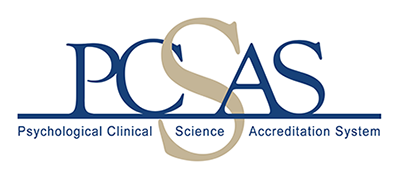by Keisha D. Novak, Adilene Osnaya, Allycen R. Kurup, & Kelly L. LeMaire, Purdue University
Racism, sexism, heterosexism, and other prejudicial attitudes pervade health and mental health care (U.S. Department of Health and Human Services, 2001; Carter, 1995, 2005). For example, racial disparities have persisted for decades such that Black, Indigenous, People of Color (BIPOC) face myriad barriers to affordable and appropriate care (Agency for Healthcare Research and Quality, 2018). Poor quality of care may be attributed to reduced access to care, lack of diverse sampling in evidence-based treatment modalities, clinicians’ lack of cultural competence, conscious and unconscious biases, language barriers, systemic inequity (Pérez-Stable & El-Toukhy, 2018), and many other factors. Unsurprisingly, such experiences are detrimental to mental health and political, economic, and social status (World Health Organization, 2017). Herein, we review the impact of discrimination in mental health care and detail how clinicians may adopt a trauma-informed lens to understand these experiences with the goal of reducing barriers and improving quality of care.
Diagnostically, trauma is operationalized as an event or series of events one experiences that threaten safety and wellbeing, manifesting as persistent and adverse effects on functioning, mental health, and physical well-being (American Psychological Association 2013). Given this, experiences of discrimination may be considered traumatic events. Discrimination exists on a spectrum ranging from extreme acts, including hate crimes and genocide, to more insidious acts such as microaggressions (common automatic, subtle, and sometimes ambiguous derogatory verbal and nonverbal actions; Nadal, 2013; Pierce et al., 1978; Solorzano, Ceja, & Yosso, 2000; Sue et al., 2007; Sue and Sue, 2013) directed towards individuals with marginalized identities. Discrimination can be both systematic (e.g., repeated) and systemic (e.g., institutionalized; Braveman et al., 2011). Not unlike trauma, cumulative experiences of discrimination are associated with depression, mood disorders, anxiety, and suicide (Plöderl and Tremblay, 2015), feelings of worthlessness, guilt, shame, anger, and grief (Williams, Neighbors, & Jackson, 2003; Paradies, 2006), as well as a number of physiological, stress-related illnesses (Pascoe and Richman, 2009; Williams and Mohammed, 2009). These experiences can also impact one’s sense of and beliefs about safety, trust, power and control, esteem, and intimacy (Kirkinis, et al. 2018).
Psychologists can utilize multicultural approaches to trauma-informed care to serve individuals with marginalized identities. A trauma-informed lens 1) recognizes that trauma is pervasive in individuals, communities, and organizations, 2) recognizes that trauma causes long-term adverse effects, 3) mitigates the impacts of trauma, and 4) engages in efforts to refrain from re-traumatization (SAMHSA, 2015). A trauma-informed lens allows one to understand how a client’s exposure to traumatic threat can impact functioning, thus allowing clinicians to utilize evidence-based approaches to help mitigate the resulting negative effects. This approach promotes clinicians’ introspection of personal identity and lived experiences to understand how their perspective may influence conceptualizations of the intersecting systems of oppression that may influence a client’s presenting concerns. In assessing the impact of discrimination on a client’s presenting problem, clinicians aim to disentangle whether discrimination is directly contributing to the problem or informs the context needed to understand the client’s life. Implementation of trauma-informed care is effective, regardless of official trauma diagnosis, for any person experiencing adverse effects of systemic and interpersonal discrimination.
In the absence of trauma-informed training, and recognizing the possible connection between discrimination-based stress, trauma, and presenting symptoms, a clinician may inadvertently harm the client by pathologizing lived experiences. Without a trauma-informed lens, clinicians may aim to address a client’s difficulties with anxiety, depression, dissociation, avoidance, guilt and shame, or issues with mistrust without recognizing traumatic stress resulting from compounded experiences of discrimination and oppression (e.g., misdiagnoses, clinician-perpetrated microaggressions, chronic invalidation; Helms, Nicolas, & Green, 2012; Bryant-Davis and Ocampo, 2005). For example, Black individuals’ responses to systematic discrimination are commonly misdiagnosed as paranoia, psychotic symptoms, and schizophrenia (Metzl and Roberts, 2014; Whaley, 2001). Over-pathologizing experiences has the potential to further alienate clients and compound interpersonal and institutional betrayal trauma (Helms, Nicolas, & Green, 2012; Bryant-Davis and Ocampo, 2005).
Utilizing a trauma-informed case conceptualization entails understanding and framing experiences of discrimination as stressful and potentially traumatic, and then diagnosing and planning treatment accordingly. This approach includes ongoing assessment of discriminatory experiences, normalizing experiences with and reactions to trauma, fostering compassion, cultivating resilience (Antonovsky, 1987; Ullman et al., 2007; Fredrickson, 2001; Bryant-Davis and Ocampo, 2006; Carter, 2007), and implementing evidence-based cognitive behavioral therapies when appropriate (i.e., Cognitive Processing Therapy, Prolonged Exposure). For example, for someone who has been consistently discriminated against, a trauma-informed case conceptualization would note a potential trauma and stressor-related disorder rather than misdiagnose the client with paranoia or depression. Trauma-informed treatment principles include utilizing cognitive restructuring techniques and finding effective, balanced alternative thoughts (e.g., not denying systemic, interpersonal oppression). For instance, the thought “I can’t trust any authority figures” might be reframed as: “While I cannot trust all authority figures to have my best interest at heart, I have been able to trust certain people” or “It makes sense to mistrust authority figures given systemic discrimination and it is likely ineffective to avoid seeking help as it may harm me in the long term.” Additionally, trauma-informed clinicians may consider interventions that help clients build resilience and skills to manage prejudice and discrimination. For example, clinicians may assist clients in applying DBT skills like the interpersonal effectiveness skill DEAR MAN (Describe, Express, Assert, Reinforce, Mindful, Appear confident, Negotiate, respectively) to confront microaggressions and advocate for themselves with other care providers (Skerven, Whicker, & LeMaire, 2019).
A trauma-informed approach is also crucial for effectively working with individuals experiencing discrimination based on other identities. Gender and sexual minority (GSM)-identified individuals have been found to be generally dissatisfied with psychological services (Pachankis and Goldfried, 2004), noting a lack of queer-affirmative psychotherapy (a therapeutic orientation that includes queer-affirmative attitudes, knowledge and skills; Davies, 1996, Pachankis and Goldfried, 2004) and cis-heteronormative bias (Pepping, Lyons, & Morris, 2018). Queer-affirmative therapists appreciate diversity of sexual orientation and gender within their clients. Clinicians frequently report insufficient queer-affirmative graduate training (Rock, Carlson, & McGeorge, 2010); however, training in queer-affirmative psychotherapy is associated with greater self-efficacy in working with GSM-identified clients (Alessi, Dillon, & Kim, 2015; Rock, Carlson, & McGeorge, 2010).
To further develop a multicultural trauma-informed lens of discrimination, we recommend training in personal and clinical skills to combat discrimination (Betancourt and Green, 2010; Kirmayer, Guzder, & Rousseau, 2014; Nagy et al., 2019; LeMaire et al., 2020), such as skills related to confronting microaggressions with clients, colleagues, and supervisors. Ongoing efforts to increase inclusion through affirmative clinic practices (e.g., allowing clients to self-report on paperwork their many identities in their own language) and cultivating a sense of safety by using gentle but direct, open, nonjudgmental dialogue with clients may also be helpful (Knutson and Koch, 2018). In graduate training, we recommend increased focus on multicultural trauma-informed clinical didactics and workshops targeting multicultural competence in health services (Cook, Newman, & Simiola, 2019). Additionally, we strongly encourage programs to consider efforts to implement diversity and inclusion committees or multicultural consultation teams to both integrate these topics into ongoing training and create specialized spaces to focus on these issues (Nagy et al., 2019).
_______________________________________________________________________
References
Alessi, E. J., Dillon, F. R., & Kim, H. M.-S. (2015). Determinants of lesbian and gay affirmative practice among heterosexual therapists. Psychotherapy, 52(3), 298–307. https://doi.org/10.1037/a0038580
American Psychiatric Association. (2013). Diagnostic and statistical manual of mental disorders (5th ed.). American Psychiatric Publishing, Inc. https://doi.org/10.1176/appi.books.9780890425596
Antonovsky, A. (1987). Unraveling the mystery of health: How people manage stress and stay well. Jossey-bass.
Agency for Healthcare Research and Quality. 2018 National healthcare quality & disparities reports. https://www.ahrq.gov/research/findings/nhqrdr/nhqdr18/index.html. Published 2018. Accessed July 16, 2020.
Betancourt, J. R., & Green, A. R. (2010). Commentary: Linking cultural competence training to improved health outcomes: Perspectives from the field. Academic Medicine, 85(4), 583–585. https://doi.org/10.1097/ACM.0b013e3181d2b2f3
Braveman, P. A., Kumanyika, S., Fielding, J., LaVeist, T., Borrell, L. N., Manderscheid, R., & Troutman, A. (2011). Health disparities and health equity: The issue is justice. American journal of public health, 101(S1), S149-S155.
Bryant-Davis, T., & Ocampo, C. (2005). Racist incident-based trauma. The Counseling Psychologist, 33(4), 479–500. https://doi.org/10.1177/0011000005276465
Bryant-Davis, T., & Ocampo, C. (2006). A therapeutic approach to the treatment of racist-incident-based trauma. Journal of Emotional Abuse, 6(4), 1–22. https://doi.org/10.1300/J135v06n04_01
Carter, R. T. (1995). The influence of race and racial identity in psychotherapy: Toward a racially inclusive model. John Wiley & Sons, Inc.
Carter, R. T. (Ed.). (2005). Handbook of racial-cultural psychology and counseling, Vol. 2. Training and practice. John Wiley & Sons, Inc.
Carter, R. T. (2007). Racism and psychological and emotional injury: Recognizing and assessing race-based traumatic stress. The Counseling Psychologist, 35(1), 13–105. https://doi.org/10.1177/0011000006292033
Cook, J. M., Newman, E., & Simiola, V. (2019). Trauma training: Competencies, initiatives, and resources. Psychotherapy, 56(3), 409. https://doi.org/10.1037/pst0000233
Davies, D. (1996). Towards a model of gay affirmative therapy. In D. Davies & C. Neal (Eds.), Pink therapy: A guide for counsellors and therapists working with lesbian, gay and bisexual clients (p. 24–40). Open University Press.
Fredrickson, B. L. (2001). The role of positive emotions in positive psychology: The broaden-and-build theory of positive emotions. American psychologist, 56(3), 218.
Helms, J. E., Nicolas, G., & Green, C. E. (2012). Racism and ethnoviolence as trauma: Enhancing professional and research training. Traumatology, 18(1), 65–74. https://doi.org/10.1177/1534765610396728
Kirkinis, K., Pieterse, A. L., Martin, C., Agiliga, A., & Brownell, A. (2018). Racism, racial discrimination, and trauma: A systematic review of the social science literature. Ethnicity & Health, 1-21.
Kirmayer, L. J., Guzder, J., & Rousseau, C. (Eds.). (2014). Cultural consultation: Encountering the other in mental health care. Springer Science + Business Media. https://doi.org/10.1007/978-1-4614-7615-3
Knutson, D., & Koch, J. M. (2018). Person-centered therapy as applied to work with transgender and gender diverse clients. Journal of Humanistic Psychology, 0022167818791082.
LeMaire, K. L., Miller, M., Skerven, K., & Nagy, G. A. (2020). Allyship in the academy. Navigating Careers in the Academy: Gender, Race, and Class, 3(1), 6–26.
Metzl, J. M., & Roberts, D. E. (2014). Structural competency meets structural racism: race, politics, and the structure of medical knowledge. AMA Journal of Ethics, 16(9), 674-690.
Nadal, K. L. (2013). That’s so gay! Microaggressions and the lesbian, gay, bisexual, andtransgender community. Washington, DC: American Psychological Association.
Nagy, G. A., LeMaire, K. L., Miller, M. L., Howard, M., Wyatt, K., & Zerubavel, N. (2019). Development and implementation of a multicultural consultation service within an academic medical center. Cognitive and Behavioral Practice, 26(4), 656–675. https://doi.org/10.1016/j.cbpra.2019.02.004
Pachankis, J. E., & Goldfried, M. R. (2004). Clinical issues in working with lesbian, gay, and bisexual clients. Psychotherapy: Theory, research, practice, training, 41(3), 227. https://doi.org/10.1037/0033-3204.41.3.227
Paradies, Y. (2006). A systematic review of empirical research on self-reported racism and health. International journal of epidemiology, 35(4), 888-901.
Pascoe, E. A., & Smart Richman, L. (2009). Perceived discrimination and health: a meta-analytic review. Psychological bulletin, 135(4), 531.
Pepping, C. A., Lyons, A., & Morris, E. M. J. (2018). Affirmative LGBT psychotherapy: Outcomes of a therapist training protocol. Psychotherapy, 55(1), 52–62. https://doi-org.ezproxy.lib.purdue.edu/10.1037/pst0000149
Pérez-Stable, E. J., & El-Toukhy, S. (2018). Communicating with diverse patients: how patient and clinician factors affect disparities. Patient education and counseling, 101(12), 2186-2194. https://doi.org/10.1016/j.pec.2018.08.021
Pierce, C., Carew, J., Pierce-Gonzalez, D., & Willis, D. (1978). An experiment in racism: TV commercials. In C. Pierce (Ed.), Television and education (pp. 62- 88). Beverly Hills, CA: Sage.
Plöderl, M., & Tremblay, P. (2015). Mental health of sexual minorities. A systematic review. International Review of Psychiatry, 27(5), 367–385. https://doi.org/10.3109/09540261.2015.1083949
Rock, M., Carlson, T. S., & McGeorge, C. R. (2010). Does affirmative training matter? Assessing CFT students’ beliefs about sexual orientation and their level of affirmative training. Journal of Marital and Family Therapy, 36, 171–184. https://doi.org/10.1111/j.1752-0606.2009.00172.x
Skerven, K., Whicker, D. W., & LeMaire, K. L. (2019). Applying dialectical behavior therapy to structural and internalized stigma with LGBTQ+ clients. The Cognitive Behaviour Therapist. https://doi.org/10.1017/S1754470X18000235
Solórzano, D., Ceja, M., & Yosso, T. (2000). Critical race theory, racial microaggressions, and campus racial climate: The experiences of African American college students. Journal of Negro Education, 69(1-2), 60–73.
Substance Abuse and Mental Health Services Administration (2015). Trauma-Informed Approach and Trauma Specific Interventions. https://www.samhsa.gov/nctic/trauma-interventions.
Sue, D. W., Capodilupo, C. M., Torino, G. C., Bucceri, J. M., Holder, A., Nadal, K. L., & Esquilin, M. (2007). Racial microaggressions in everyday life: Implications for clinical practice. American Psychologist, 62(4), 271. https://doi.org/10.1037/0003-066X.62.4.271
Sue, D. W., & Sue, D. (2013). Counseling the culturally diverse: Theory and practice. Hoboken, NJ: John Wiley & Sons, Inc
Ullman, S. E., Filipas, H. H., Townsend, S. M., & Starzynski, L. L. (2007). Psychosocial correlates of PTSD symptom severity in sexual assault survivors. Journal of traumatic stress, 20(5), 821-831.
U.S. Department of Health and Human Services. (2001). Mental Health: Culture, race, and ethnicity: A supplement to mental health: A report of the Surgeon General. Washington, DC: Author.
Whaley, A. L. (2001). Cultural mistrust and mental health services for African Americans: A review and meta-analysis. The Counseling Psychologist, 29(4), 513–531. https://doi.org/10.1177/0011000001294003
Williams, D. R., Neighbors, H. W., & Jackson, J. S. (2003). Racial/ethnic discrimination and health: Findings from community studies. American journal of public health, 93(2), 200-208.
Williams, D. R., & Mohammed, S. A. (2009). Discrimination and racial disparities in health: evidence and needed research. Journal of behavioral medicine, 32(1), 20-47.
World Health Organization. About Social Determinants of Health, World Health Organization, 25 Sept. 2017, www.who.int/social_determinants/sdh_definition/en/.
Disclaimer: The views and opinions expressed in this newsletter are those of the authors alone and do not necessarily reflect the official policy or position of the Psychological Clinical Science Accreditation System (PCSAS).


